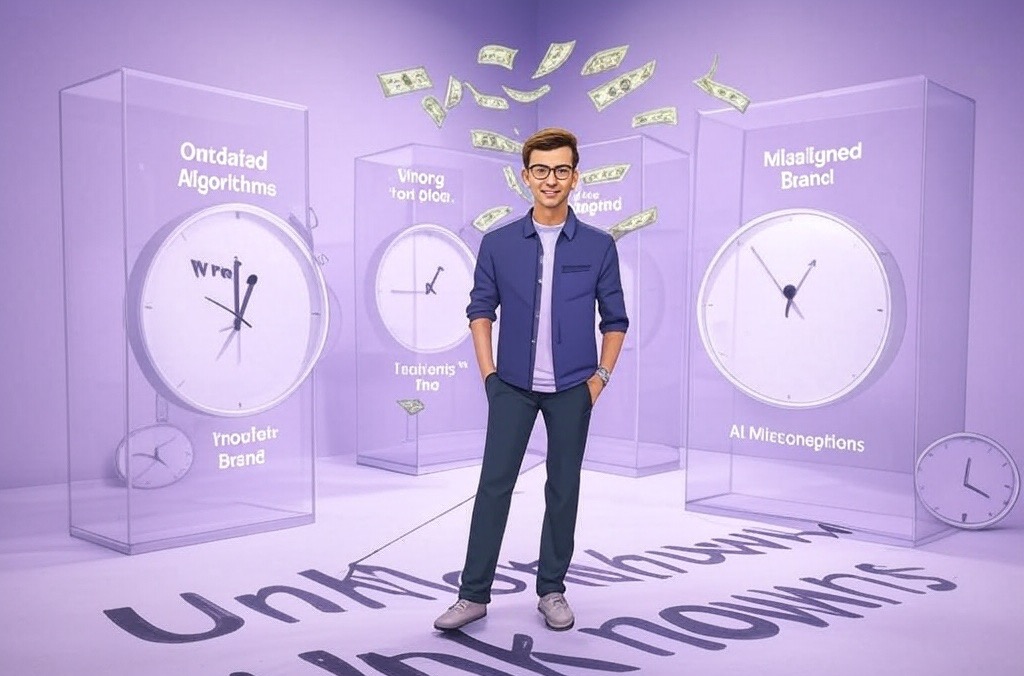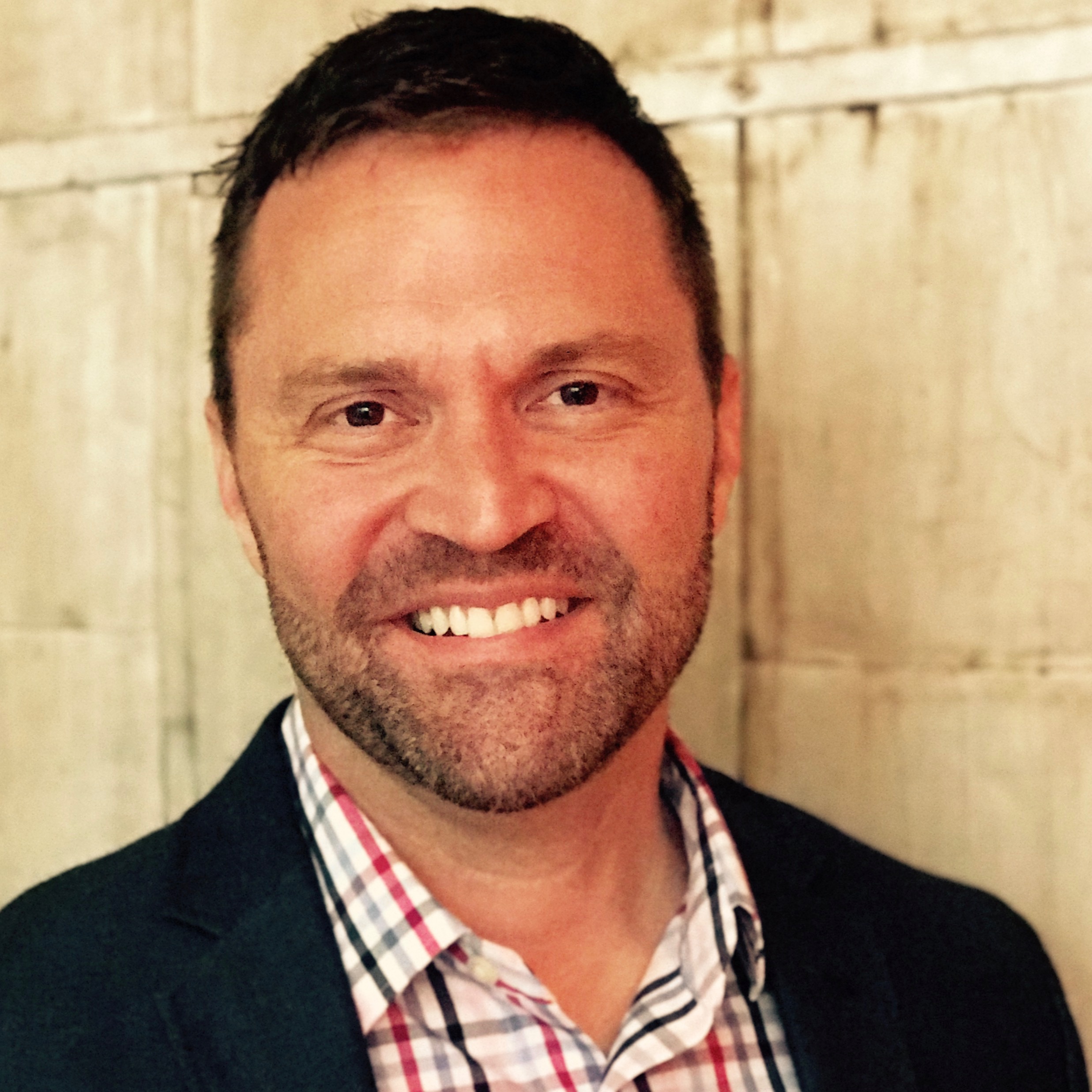
The Hidden Cost of Founder Blind Spots: What You Don't Know Is Hurting Your Startup
Executive Summary
This article explores how founder blind spots—the critical "unknown unknowns"—silently drain startup resources regardless of funding stage. Based on patterns observed across hundreds of founder interactions, we identify five costly knowledge gaps: mistimed tech investments, brand strategy confusion, algorithm misconceptions, fundraising fallacies, and AI implementation errors. With practical examples from both bootstrapped and venture-backed companies, we demonstrate how these blind spots manifest and provide a systematic framework for identifying them before they compromise your CAC, runway, or PMF.
"I had no idea what I didn't know."
This phrase echoes through virtually every founder conversation I have. Whether it's a bootstrapped solo founder with $5K MRR just getting started or a Series A leader with $80K MRR preparing for their next growth phase, this revelation often comes after months—sometimes years—of costly detours and resource-draining experiments.
The Three Knowledge Territories in Startup Building
In the entrepreneurial journey, there are three distinct knowledge territories:
- Known knowns: Your expertise and proven capabilities
- Known unknowns: Your acknowledged gaps (skills you know you need to learn or hire for)
- Unknown unknowns: Your blind spots (critical gaps you don't even realize exist)
That third territory is where startups bleed resources, lose momentum, and ultimately fail—regardless of how brilliant or hardworking the founder.
Real-World Cost of Blind Spots: Metrics That Matter
Consider these recent examples from our founder community:
Case Study: The Algorithm Blindside
A D2C founder with promising traction ($12K MRR) spent six months and $48,500 on a content marketing strategy that seemed logical. They created high-quality content, promoted it diligently, and followed apparent best practices.
The blind spot: Their entire approach was built for a social media algorithm that had fundamentally changed three months before they started. They were optimizing for engagement metrics that no longer correlated with reach or conversion.
The outcome: After identifying this blind spot in a 90-minute strategy session, we pivoted their approach to align with current algorithmic priorities. Within 5 weeks, they achieved:
- 4.2x increase in content reach
- 68% reduction in CAC
- 31% increase in conversion rate
All without creating more content—just deploying it differently.
Case Study: The Tech Stack Mismatch
A SaaS founder proudly showed me their elaborate technology infrastructure—Kubernetes clusters, real-time analytics, and enterprise-grade security. Their monthly AWS bill: $4,300.
The blind spot: With only 18 paying customers and pre-product/market fit, this infrastructure was dramatically premature. They had built for 10,000 users while still validating core assumptions.
The outcome: After right-sizing their infrastructure to match their actual stage:
- Monthly infrastructure costs dropped to $670
- Developer productivity increased 40%
- Runway extended by 7 months
Where Founders Commonly Get Blindsided: The Top 5 Blind Spots
1. The Mistimed Tech Stack
Many founders build elaborate systems prematurely, investing in enterprise-level tools before they've validated basic market assumptions. Others stick with manual processes long after they've become unsustainable bottlenecks.
Warning signs:
- You're spending >15% of revenue on tools with <70% utilization
- Your engineers spend more time maintaining infrastructure than building features
- Your "temporary" manual processes have existed for >6 months
Common cost: 3-6 months of wasted engineering time, technical debt, or thousands in SaaS subscriptions for underutilized tools.
2. The Personal vs. Company Brand Confusion
Should you build your founder brand first, or focus entirely on your company? The answer depends on your specific context, audience, and growth strategy.
Warning signs:
- High social media engagement that generates zero qualified leads
- Strong brand recognition with weak conversion metrics
- Audience demographics that don't match your ideal customer profile (ICP)
Common cost: 6-12 months building visibility that doesn't convert to revenue or traction with the wrong customer segments.
3. The Algorithm Assumption
Digital marketing channels aren't static. What worked six months ago might be actively penalized today. Many founders execute outdated playbooks with perfect fidelity—and get perfectly disappointing results.
Warning signs:
- Steadily declining performance despite consistent execution
- Competitors with inferior content achieving superior results
- Marketing metrics declining while spend increases
Common cost: 40-60% higher CAC than necessary and 3-9 months of opportunity cost while pursuing ineffective strategies.
4. The Fundraising Fallacy
"We just need to raise money, then we can..." This thinking leads founders to spend months chasing capital when simple customer-focused experiments could generate immediate revenue.
Warning signs:
- You're spending >50% of your time on fundraising activities
- Your product roadmap depends entirely on fundraising outcomes
- You've delayed customer-facing improvements to focus on investor presentations
Case example: A B2B founder pivoted from fundraising mode to selling higher-priced service packages, generating $27K MRR that self-funded their product development, ultimately making them more attractive to investors.
5. The AI Implementation Blind Spot
Today's founders have unprecedented access to AI tools, but most are asking the wrong questions. The difference between an average prompt and an exceptional one can be the difference between generic advice and transformative insights.
Warning signs:
- You're using AI for basic tasks but not strategic decision-making
- Your prompts generate generic responses that could apply to any business
- You haven't developed a systematic approach to AI implementation
Common cost: 30-50% less value extracted from AI tools than possible with optimal implementation.
How StartupStage Systematically Illuminates Blind Spots
At StartupStage, we've built our entire model around illuminating these blind spots before they derail your growth.
1. The BUILD Framework
Our proprietary diagnostic assessment reveals the specific blind spots most likely to impact your particular:
- Business model (SaaS, marketplace, D2C, service)
- Growth stage (pre-revenue to Series A)
- Resource allocation (team composition, capital efficiency)
- Market dynamics (competitive landscape, channel saturation)
2. Peer Knowledge Networks
Our founder community creates collective intelligence that surfaces emerging challenges before they become mainstream knowledge:
- Stage-specific cohorts share real-time insights
- Cross-industry pattern recognition identifies universal principles
- Structured problem-solving sessions tackle specific blind spots
3. Pattern Recognition Algorithms
With hundreds of founders across our platform, we identify trends and shifts that impact your growth:
- Channel effectiveness by industry and stage
- Common failure points in scaling operations
- Timing indicators for key infrastructure investments
4. Implementation Playbooks
Knowing about a blind spot isn't enough—you need practical steps to address it:
- Stage-appropriate action plans
- Decision frameworks for resource allocation
- Prioritization methodologies based on your specific constraints
Measurement Framework: Quantifying the Cost of Blind Spots
How expensive are your blind spots? Consider these metrics:
- Runway Impact: How many months of additional runway would you gain by eliminating inefficiencies?
- Opportunity Cost: What growth milestones have you missed due to misaligned priorities?
- Resource Utilization: What percentage of your time and budget is allocated to activities with measurable ROI?
- Decision Velocity: How quickly can you validate or invalidate critical assumptions?
From One Founder to Another: The Bottom Line
The most expensive decisions in your startup journey are the ones based on incomplete information—not because the information doesn't exist, but because you weren't aware you needed it.
Every week, I watch the same scene unfold: a founder realizes they've been operating with a critical knowledge gap that's been silently draining their resources. Then comes the inevitable: "I wish I'd known this six months ago."
This isn't about avoiding all mistakes—some learning must be firsthand. It's about eliminating the predictable, avoidable ones that keep founders stuck in cycles of reinventing broken wheels.
This Week's Action Steps
- Audit Your Assumptions: What decisions are you making based on unvalidated assumptions?
- Calculate Your Blind Spot Cost: How much runway are you losing to inefficiencies?
- Identify Your Knowledge Gaps: What areas of your business lack objective performance metrics?
If you're ready to illuminate your blind spots before they compromise your growth, Let's talk
"The framework StartupStage provided helped me identify three critical blind spots in our go-to-market strategy. Addressing just one of these saved us an estimated $30,000 in misaligned marketing spend and accelerated our timeline by months." – Current Founders' Circle member
Forward this to a founder who's working hard but not seeing proportional results.
Sometimes the greatest gift isn't a solution, but the awareness that you've been solving the wrong problem.
